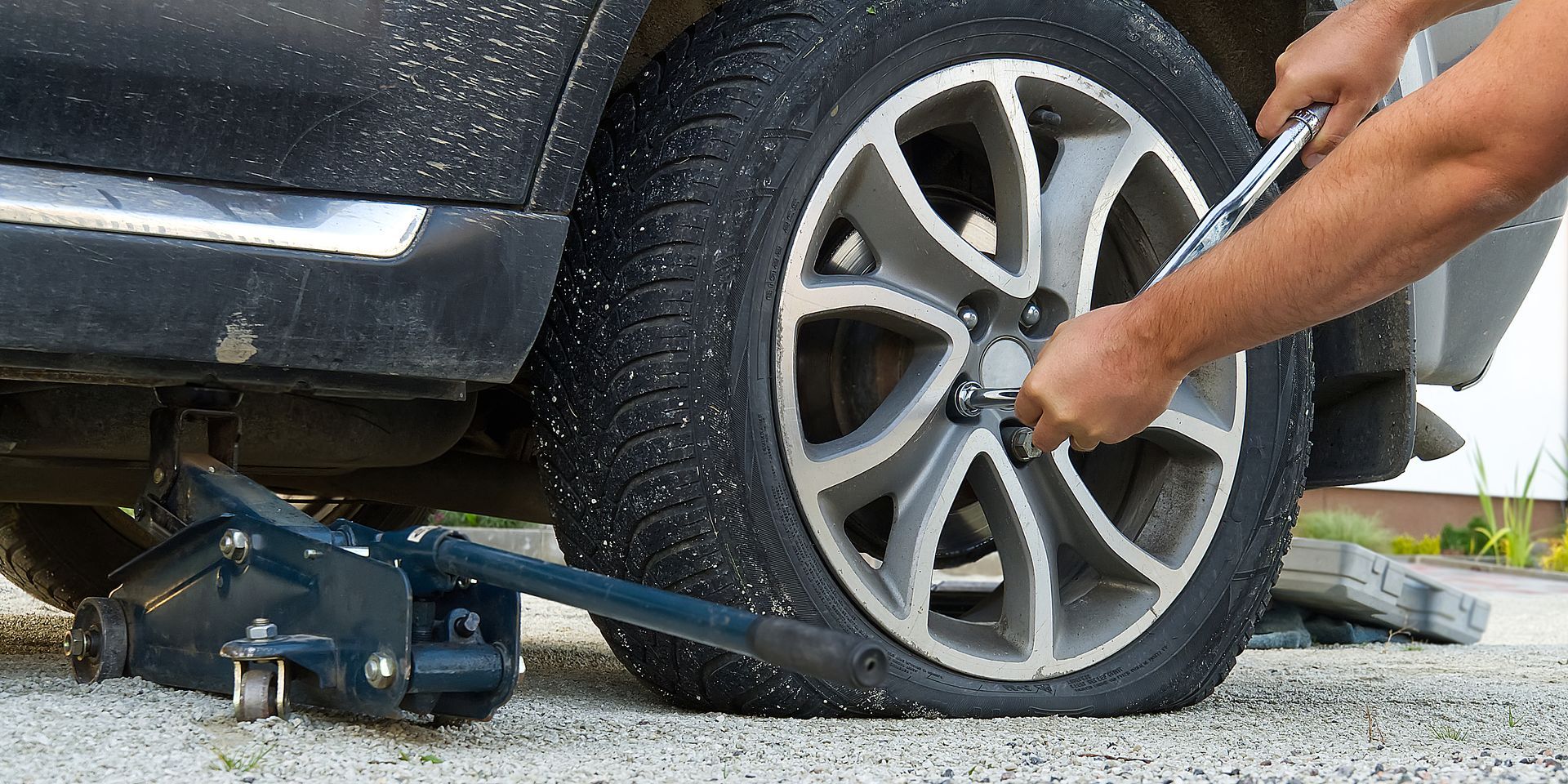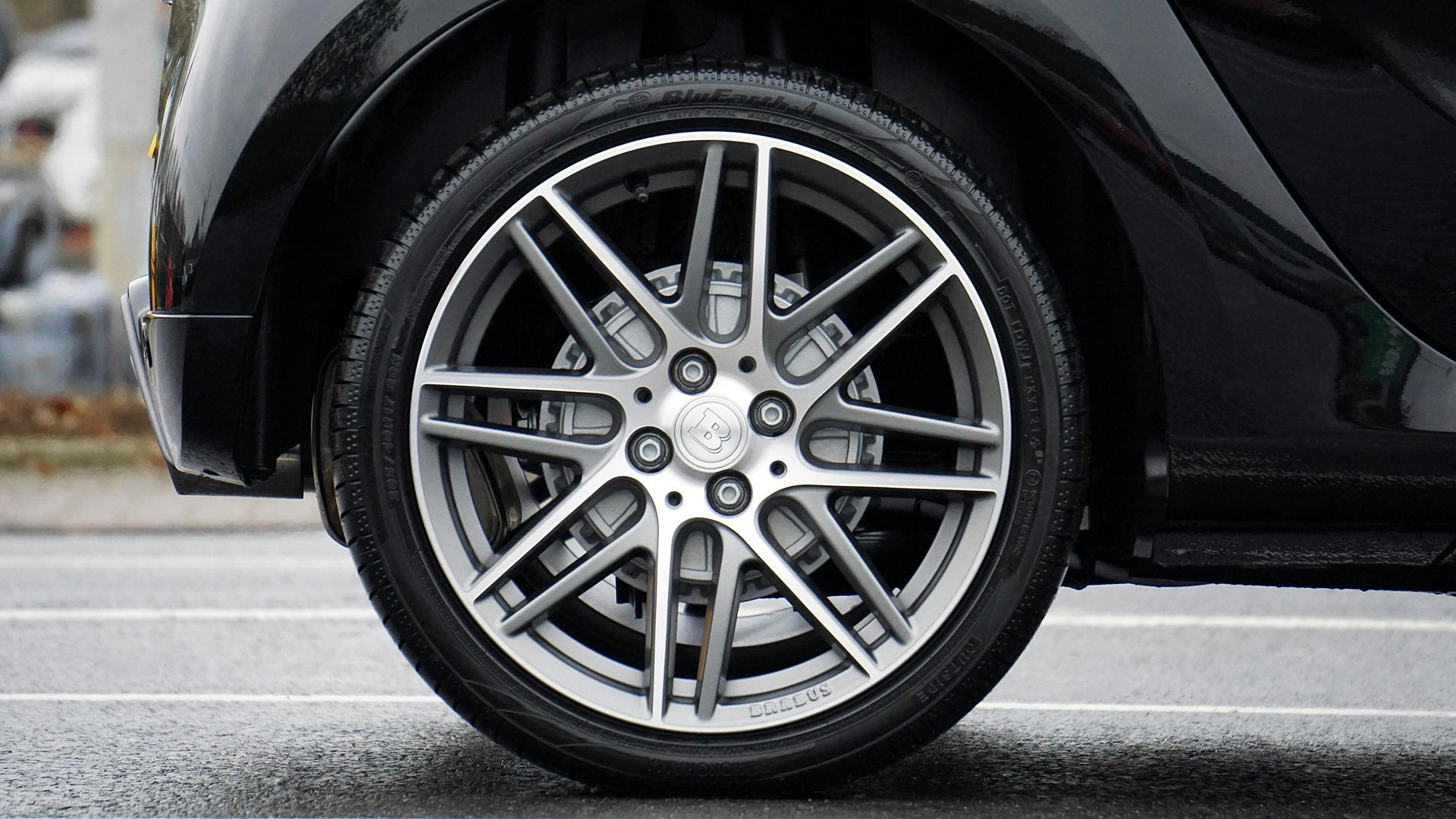When it comes to the lifespan of a tire, there is no exact answer. However, there are factors that can influence how long a tire will last. In this article, we will explore the average lifespan of tires and the varying factors that can affect their durability.
Key Takeaways:
- The lifespan of a tire varies depending on various factors.
- Factors such as driving habits and regular maintenance can impact tire longevity.
- Tread wear , safety concerns , and tire inflation and alignment issues are signs for tire replacement .
- The NHTSA provides guidelines, experts offer recommendations, and manufacturers have specific recommendations for tire lifespan.
- Strategies for prolonging tire life include proper maintenance practices and driving techniques to minimize wear and tear.
Average Lifespan of Tires and Varying Durabilities
The average lifespan of a tire can vary depending on various factors. One of the key factors that can influence tire longevity is your driving habits. How you drive can have a significant impact on how long your tires last.
The Role of Driving Habits on Tire Longevity
Your driving habits play a crucial role in determining the lifespan of your tires. Aggressive driving, such as hard braking and rapid acceleration, can cause excessive wear and tear on the tire tread. This can shorten the lifespan of your tires. Additionally, frequent high-speed driving and sharp cornering can also contribute to premature tire wear.
To maximize the lifespan of your tires, it is important to practice good driving habits. Avoid aggressive driving maneuvers and maintain a consistent speed while driving. Additionally, try to avoid potholes, curbs, and other road hazards that can cause damage to the tire sidewalls or affect the tire alignment.
Impact of Regular Maintenance on Tire Mileage
Regular maintenance is essential for prolonging the lifespan of your tires. Proper tire inflation and regular tire rotations can help distribute the weight and wear evenly across all four tires. This can prevent premature wear on specific tires and extend the overall lifespan of your tire set.
In addition, regular inspections for signs of uneven wear, bulges, or punctures can help identify potential problems early on. By addressing these issues promptly, you can prevent further damage and potentially extend the lifespan of your tires.
In conclusion, your driving habits and regular maintenance practices have a significant impact on the lifespan of your tires. By adopting safe driving habits and implementing regular maintenance routines, you can maximize the longevity of your tires and ensure a smooth and safe driving experience.
Factors Affecting Tire Longevity
When it comes to the longevity of your tires, several factors come into play. Understanding these factors can help you make informed decisions that can maximize the lifespan of your tires. Let's take a closer look at each of these factors and their impact on tire longevity.
Miles Driven: The number of miles you drive is a significant factor in determining how long your tires will last. The more miles you put on your tires, the more wear and tear they will experience. Regularly monitoring and tracking your mileage can help you gauge when it's time for tire replacement.
Road Conditions: The condition of the roads you typically travel on can affect tire longevity. Rough or poorly maintained roads can cause your tires to wear out faster. Potholes, debris, and uneven surfaces can contribute to premature tire damage. Being mindful of road conditions and avoiding hazards can help extend the lifespan of your tires.
Driving Style: How you drive can also impact tire lifespan. Aggressive driving habits, such as sharp turns, sudden stops, and speeding, can accelerate tire wear. Maintaining smooth acceleration and deceleration, and practicing defensive driving techniques , can help minimize unnecessary stress on your tires.
Maintenance: Regular tire maintenance plays a crucial role in tire longevity. Proper inflation, rotation, and alignment are essential to ensure even wear and proper tread depth. Regularly checking tire pressure, rotating tires as recommended by the manufacturer, and aligning your wheels can help preserve tire life.
Age: The age of your tires can affect their longevity, even if they have not been extensively used. Over time, the rubber compounds in tires deteriorate, making them more susceptible to damage and wear. It is generally recommended to replace tires after six years, regardless of their tread depth.
To visualize the factors affecting tire longevity, take a look at the illustration below:
By understanding and addressing these factors, you can make informed decisions to prolong the lifespan of your tires. In the next section, we will explore the signs that indicate the need for tire replacement to ensure your safety on the road.
Identifying the Signs for Tire Replacement
Ensuring your tires are in good condition is crucial for your safety on the road. Over time, tires can wear out and become unsafe to drive on. This section will provide you with valuable information on how to identify the signs that indicate the need for tire replacement, as well as the importance of regular monitoring. If you are in the Phoenix, AZ metro area there are companies like our team at Lug Wrench Heroes that have years of experience with determining whether you should replace your tires or not. We also are one of the few that offer a mobile tire replacement and tire repair service.
Tread Wear and Safety Concerns
One of the key indicators that your tires may need to be replaced is tread wear. Tread wear refers to the depth of the grooves in your tire's tread pattern. As tires age and are used, the tread depth decreases, reducing their ability to grip the road. It is important to regularly check your tire's tread depth using a tread depth gauge or the penny test.
To perform the penny test, simply insert a penny into the tread groove with Lincoln's head upside down. If you can see the top of Lincoln's head, it is time to replace your tires. This simple test helps you determine whether your tires have enough tread to provide adequate traction on wet or slippery surfaces, ensuring your safety on the road.
In addition to tread wear, there are other safety concerns that may indicate the need for tire replacement. These include cracks, bulges, or cuts in the tire sidewall, as well as irregular wear patterns. Any of these signs can compromise the structural integrity of the tire and increase the risk of a blowout or loss of control while driving.
Understanding Tire Inflation and Alignment Issues
Proper tire inflation and alignment are essential for the longevity of your tires and your safety on the road. Underinflated or overinflated tires can lead to uneven tread wear, reduced fuel efficiency, and poor handling. It is important to regularly check and maintain the recommended tire pressure specified by the vehicle manufacturer.
A tire pressure gauge can help you ensure that your tires are properly inflated. By maintaining the correct tire pressure, you can prevent premature wear, prolong the lifespan of your tires, and optimize fuel efficiency.
Similarly, tire alignment plays a crucial role in tire lifespan and safety. Misalignment can cause uneven tread wear, leading to the need for premature tire replacement. Signs of misalignment may include uneven tire wear, pulling to one side while driving, or steering wheel vibration. Regular alignment checks can detect and correct any misalignment issues, helping you extend the life of your tires.
By understanding the signs that indicate the need for tire replacement, such as tread wear and safety concerns , and recognizing the importance of proper tire inflation and alignment, you can ensure the optimal performance and longevity of your tires. Regular monitoring and maintenance are key to maximizing your tire's lifespan and keeping you safe on the road.
How Many Miles is a Tire Supposed to Last?
When it comes to the lifespan of a tire, there are guidelines and recommendations provided by different sources. Understanding these guidelines can give you valuable insights into how long your tires are supposed to last. In this section, we will explore the guidelines set by the National Highway Traffic Safety Administration (NHTSA) and expert recommendations for tire lifespan. We will also discuss how tire manufacturers provide specific recommendations about tire longevity.
NHTSA Guidelines and Expert Recommendations
The NHTSA, as a regulatory agency, has established guidelines to ensure safety on the roads. These guidelines include recommendations for tire maintenance and replacement. According to the NHTSA, tires should be replaced when the tread depth reaches 2/32 of an inch. This can be easily measured using the tread wear indicator bars on the tire. Additionally, experts suggest replacing tires every 6 years, regardless of tread wear, due to the degradation of rubber compounds over time.
Tire Lifespan According to Manufacturers
Tire manufacturers also provide recommendations for the lifespan of their tires based on extensive testing and research. These recommendations take into account various factors that can affect tire durability , such as road conditions, driving habits, and maintenance. While these recommendations may vary among manufacturers, a general guideline is that tires should last between 25,000 to 50,000 miles.
It's important to note that these guidelines and recommendations provide a general understanding of tire lifespan. Individual factors such as driving conditions, maintenance practices, and tire quality can significantly influence the actual lifespan of a tire. Regular inspections and monitoring of tread wear are essential to ensure safe driving and maximize the longevity of your tires.
Strategies for Prolonging Tire Life
Prolonging the life of your tires is not only cost-effective but also crucial for ensuring optimal performance on the road. By following these strategies for tire maintenance and implementing smart driving techniques , you can minimize wear and tear , extend the lifespan of your tires, and enhance your driving experience.
Best Practices in Tire Maintenance
Proper tire maintenance plays a significant role in prolonging tire life and maximizing performance. Here are some best practices to keep in mind:
- Regular tire inspections: Periodically check your tires for signs of wear, including uneven tread wear, cracks, and bulges. Inspect the tire pressure regularly to ensure they are properly inflated.
- Tire rotations: Regularly rotate your tires as recommended by the manufacturer or every 6,000 to 8,000 miles. This helps distribute the wear more evenly, extending the lifespan of the tires.
- Proper tire inflation: Maintain the correct tire pressure according to the manufacturer's recommendations. Under-inflated or over-inflated tires can lead to premature wear and reduced fuel efficiency.
- Wheel alignment: Ensure your wheels are properly aligned to prevent uneven tire wear. Misaligned wheels can cause tires to wear out faster on one side, leading to reduced tire life and compromised handling.
- Tire balancing: Have your tires balanced regularly to ensure even weight distribution. Balancing helps prevent vibrations and uneven wear, increasing the longevity of your tires.
Driving Techniques to Minimize Wear and Tear
Adopting the following driving techniques can help minimize wear and tear , further prolonging the life of your tires:
- Smooth acceleration and braking: Gradually accelerate and decelerate to reduce stress on your tires. Avoid sudden stops and aggressive acceleration, as these can cause excessive tire wear.
- Proper cornering: Take turns and corners at an appropriate speed to minimize strain on the tires. Avoid sharp turns and excessive steering to prevent tire scrubbing and sidewall damage.
- Watch for road hazards: Stay alert for potholes, debris, and other road hazards. Hitting these obstacles can cause tire damage and impact their lifespan.
- Avoid overloading: Avoid exceeding the maximum weight capacity recommended by the vehicle manufacturer. Overloading the vehicle puts additional stress on the tires and can lead to premature wear.
- Proper parking: When parking, avoid curbs and other obstructions that can cause sidewall damage. Be mindful of the parking surface to prevent nails, glass, or other sharp objects from puncturing the tires.
By incorporating these tire maintenance best practices and implementing smart driving techniques, you can extend the life of your tires and ensure a safer and more cost-effective driving experience.
Conclusion
Understanding the lifespan of tires and the factors that can affect their longevity is crucial for maintaining optimal vehicle performance and safety. By following proper maintenance practices and implementing driving techniques to minimize wear and tear, you can significantly maximize the lifespan of your tires and ensure a safer driving experience.
Maintaining regular tire maintenance is essential to prolong their lifespan. This includes regularly checking tire pressure and maintaining proper inflation levels. Additionally, routine tire rotations and alignments can help distribute wear more evenly, extending the overall durability of your tires.
Furthermore, your driving habits play a significant role in tire longevity. Avoiding aggressive acceleration and braking, as well as reducing excessive speed and sharp turns, can help minimize the strain on your tires and decrease the wear and tear they experience on the road.
While understanding the average lifespan of tires is helpful, it's important to remember that the actual longevity can vary depending on factors such as miles driven, road conditions, driving style, maintenance, and age. Regularly inspecting your tires for signs of tread wear and safety concerns, and promptly replacing them when necessary, will ensure that you are always driving on reliable and safe tires.
FAQ
How long is a tire supposed to last?
The lifespan of a tire can vary depending on various factors such as driving habits, maintenance, and road conditions. There is no exact answer to this question, but with proper care, tires can typically last around 50,000 to 70,000 miles.
How can driving habits impact tire longevity?
Aggressive driving, excessive speeding, and sudden braking can accelerate tire wear and decrease their lifespan. Consistently practicing safe and responsible driving habits can help extend the life of your tires.
Why is regular maintenance important for tire mileage?
Regular maintenance tasks such as tire rotations, wheel alignments, and proper tire inflation can help maximize tire lifespan. Keeping your tires properly maintained ensures even tread wear and optimal performance.
What are the factors that affect tire longevity?
Several factors can impact tire lifespan, including miles driven, road conditions, driving style, maintenance, and age. Proper maintenance and driving habits can help mitigate the effects of these factors.
How do I know when it's time to replace my tires?
Signs that indicate the need for tire replacement include excessive tread wear, tire bulges or bubbles, uneven wear patterns, and worn-out tire sidewalls. It is important to replace tires when they no longer meet safety standards.
What should I know about tire inflation and alignment?
Proper tire inflation and alignment are crucial for extending tire lifespan. Underinflated or overinflated tires can cause uneven wear, while improper alignment can lead to increased tire wear and poor handling.
What are the guidelines for tire lifespan?
The National Highway Traffic Safety Administration (NHTSA) provides guidelines for tire lifespan, recommending that tires should be replaced after six years, regardless of tread wear. However, expert recommendations and specific tire manufacturers may have additional guidelines.
How can I prolong the life of my tires?
To extend tire life, it is important to follow best practices in tire maintenance, such as regular rotations, proper inflation, and timely wheel alignments. Additionally, adopting driving techniques that minimize wear and tear, such as avoiding aggressive driving and maintaining safe speeds, can help prolong tire lifespan.














